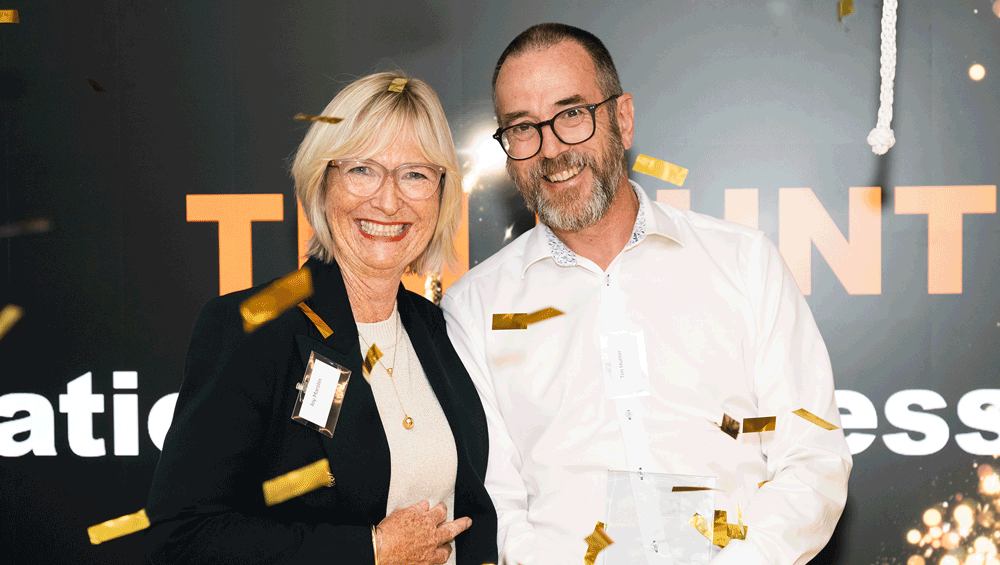
Most people are either unaware of making emotional investment decisions, or in denial, that they do at times fall into a trap. SINGAPORE - Investing and financial markets might be full of data, graphs and analyses, but one thing they do not chart is how much of it could have been driven by emotional investors. We are inherently emotional beings, after all, and we cannot stop feelings from happening.
What we can try to do is prevent our emotions and psychological behaviours from influencing us into making a bad investment decision – firstly, by being aware of how we are feeling, and then going through some mental checks before acting on it in the market. Unfortunately, most people are either unaware of making emotional investment decisions or are in denial, so they do at times fall into a trap. “They can’t face the reality when they sell their investment and the loss is materialised, because the emotional pain they experience is greater,” said Mr Aaron Chwee, head of wealth advisory at OCBC Bank.
Investors may also experience greed and overconfidence. So what are the biggest red flags to be wary of? Fear and greed. That includes the fear of missing out, or Fomo, which is a pretty common emotion experienced by many, Mr Chwee added.
When one pays attention to market chatter and to what friends are buying, it could give the impression that a certain company or stock is popular or a good one to invest in. This could lead to irrational decisions and taking excessive risk without doing adequate research. Take, for example, the meme stock bubble of 2021, when some stocks such as GameStop surged more than 1,000 per cent, and later petered out.
A meme stock is one that sees dramatic price increases due to social media sentiments. “We’ve seen this happening in China recently, with young people. After a series of government stimulus had been rolled out, they took out loans to buy Chinese equities, and had no idea how to service the loans,” said Mr Chwee.
“Later, measures were announced, (things fell) short of expectations and there was some correction in the market...
then they sold and lost quite a bit of money.” China’s central bank had announced in September that it would implement multiple measures to boost its economy, leading to the stock markets enjoying their biggest weekly rise in 16 years in the last week of September. But by Oct 9, the Chinese stocks had their biggest price drop in 27 years, after the expected policies to supplement the earlier measures did not come.
Investors should also be aware of confirmation bias, which occurs when one seeks out information to confirm their existing beliefs and ignores any contradicting data. “Humans tend to follow one another – they seek comfort that there’s somebody doing the same thing as them, like going for the longest queue at that hawker centre..
. They blindly follow whichever is more popular. This herd mentality can potentially exacerbate asset bubbles or market crashes,” said Mr Chwee.
The quick-changing nature of market sentiments may also induce panic. While the addition of 254,000 jobs in the US in September beat economists’ estimates with a three-month low unemployment rate of 4.1 per cent, and was good news for the US labour market, it resulted in the US Federal Reserve slowing its interest rate cuts.
Mr Anthony Chin, a principal investment specialist with PhillipCapital, said a big part of his job is about managing the emotions of his clients, which he said number around a thousand. Of these, up to 20 speak to him on a regular basis, while the rest will contact him when there’s major news that might affect their investments. Not surprisingly, the most common emotion his clients exhibit is the fear of losing money.
Mr Chin said: “It’s not just about whether they panic. There are cases where the newspaper is talking about artificial intelligence or Nvidia making a new high, and my clients will ask if they can buy it (out of excitement). My job is more of a reminder to calm them down.
Different investors have to know what their objective is, is it short term or an investment.” He added: “Always have Plan B, which is to diversify your investment portfolio and, most importantly, know when to take profit and cut your losses.” Patience and homework One way to stay sane when investing would be to approach it with a long-term mindset.
Challenging market conditions often lead investors to exit the market and remain uninvested until a recovery appears clear, or till there is more certainty, said Mr Manish Saini, a Citigold Private Client investment counsellor at Citibank Singapore. “There is a sense that uncertainty might influence consumer behaviour, making them more conservative. In the short run, fear may result in knee-jerk reactions from investors that they eventually regret,” added Mr Saini.
“In the long run, they may tend to regret things they have not done, for example, the retirement they have not saved enough for.” He said that exchange-traded fund investment flows suggest that investors often fail at market timing as they wait until both downturns and then recoveries are clearly established, in this way exiting the market “too late” near the bottom, and re-entering “too late” and missing much of the recovery. “Over time, the opportunity costs of such mistiming can compound and lead to significant underperformance, compared with a strategy of staying invested,” he said.
Mr Saini cited an S&P 500 analytics hypothetical investment scenario set over two decades: “It would have still delivered an average annual return of 10.78 per cent. So even if the investors select the worst day each year to invest, they would still have come out ahead if they continued investing in the market over 20 years.
” And before jumping into the next hot stock, do your homework, such as looking at the price-to-earning ratio and the historical data over a period of 10 years, advised Mr Chwee. Valuations that are way above the 10-year average should be approached with caution, while current valuations that are way below the average could be seen as an opportunity to enter. Legendary investor Warren Buffett is known for buying during times of financial crises and playing the long game.
So what can one do to counteract our emotions and think rationally when it comes to making investments? Here’s advice from industry experts. 1. Delay your gratification Mr Manish Saini of Citibank Singapore said: “Emotions, specifically negative emotions such as fear and greed, can be contagious, and cause investors to respond in such a way that they maximise returns or cut losses in the short term.
There has been some academic research on how people make decisions on re-allocation and how they experience risk. Such research indicates that investors tend to be short-term maximisers, and do not like to delay gratification. “Simply put, they tend to focus more on the month-to-month performance of their investments, while not giving enough attention to long-term plans such as their desired asset level on retirement.
“Investing is about delaying gratification, so it is often useful to get people to think about investment from a longer-term perspective, instead of being guided by shorter-term sentiments.” 2. Think about the dollar cost average of your investments Mr Aaron Chwee of OCBC Bank said: “For individuals, work with a financial adviser to set your objectives and be clear why you want to invest, and to understand the financial climate.
“Objectives can be something like a retirement nest egg or for your children’s education. Get an appropriate time frame to achieve your financial objectives. “Then, think about your dollar cost averaging.
Many think it is just theoretical, but that’s not true. It allows investors to continually add into positions at various prices, because markets sometimes go lower, and when you buy at lower prices, you reduce your overall cost.” Here is an example of how dollar cost averaging works: You have decided to put aside $50,000 over 10 years to invest for your retirement, which works out to $5,000 a year.
You could use the yearly investment sum at the beginning of the year to buy all the shares at one go, which could be worth $10 each at the time. Or you could choose to invest $416 a month to buy shares. If a certain stock trades at $10 that month, you can buy about 41 shares.
If it trades at $5 another month, you can buy 83 shares. The stock may trade higher again at some point, but the idea is that you would have reduced the average price at which you bought the stock over the long term. 3.
Diversify your portfolio across sectors, geographies and asset types Mr Chwee said: “ Maintain a well-diversified portfolio to ensure that the risk of the portfolio fits your risk appetite, and consider fundamentally sound investments in stable companies and sectors relevant in tomorrow’s world. That would remove the short-term considerations and enable you to ride out the longer-term investment. “The next thing is how one then invests: What is your asset allocation, the percentage of equities versus bonds, and how does that gel with how much volatility you can live with? “Then figure out what your investment thesis is.
Do you want to segregate your portfolio into global stocks and further diversify it so that you don’t have a single instrument that could be a disaster for your overall investment?” 4. Know your target price and sell price Mr Anthony Chin of PhillipCapital said: “When we look at the stock market, our main objective is to earn some returns from the investment. Unless there’s a fundamental shift, maybe this client is risk-averse, he wants to play safe, I wouldn’t advise him to sell everything because the market is on an upward trend.
Maybe find one or two stocks that can benefit from future Fed rate cuts. It’s good to make a profit. There’s no point in paper gain or paper loss.
You have to convert them. “I don’t advise clients to buy in when stocks are at a new high. Stocks will always have a pull back.
Risk management is very important. So don’t put all your money in straight away. You could buy half the position, and then wait and monitor.
“If you want to counter emotional investments, you need to know your target price (the estimated price based on earnings forecasts and other valuation methods) and the price you need to sell.” 5. Debate with your friends Mr Chwee said: “ One of the biggest hurdles for myself is confirmation bias.
Because I’m in the industry, have analysed and a view of what I think the market should be, I go out there and look for information that confirms my belief. “So what I do is debate with friends and colleagues. I tell them to prove me wrong – what contradicts what I’m saying, and to convince me that my view is wrong.
That’s one way to reduce confirmation bias.” Join ST's Telegram channel and get the latest breaking news delivered to you. Read 3 articles and stand to win rewards Spin the wheel now.













